Last Updated on April 29, 2025 by Ewen Finser
If you’re trying to make money with affiliate marketing, you already know it’s not as easy as just dropping a few links into your blog or YouTube description. Between tracking clicks, managing different programs, and making sure your links work, there’s a lot to juggle.
That’s where affiliate marketing tools come in. With the right ones, you can save time, avoid mistakes, and grow your earnings faster. Let’s walk through some of the best tools out there and explore what they do and how they can make your life easier.
What Can Affiliate Marketing Tools Do for You?
Without the right tools, you’re stuck doing a lot of manual work: tracking down broken links, double-checking that your affiliate IDs are added properly, guessing which pages are driving sales, and missing out on commissions because your links don’t work in every country.
These tools fix all of that by handling the boring, technical parts for you so you can focus on creating good content and growing your audience.
For example, let’s say you review fitness products. You might link to a set of resistance bands on Amazon. But six months later, Amazon removes that listing. If you aren’t constantly checking your old links, you’ll keep sending visitors to a dead page, and they’ll either bounce or lose trust in you. And let’s be honest: who has the time to go through all the links every day? Someone who is trying to work on their business surely doesn’t. So you need a tool to do that on its own.
Another huge thing affiliate tools do is help you understand your data. Maybe you think your article about “Best Running Shoes” is your top performer because it gets the most traffic. But what if your smaller post about “Best Running Socks” is driving more affiliate sales? Without a way to connect clicks to commissions, you’re flying blind. Tools that combine link tracking with revenue reporting show you what’s making you money, not just what’s getting views.
Affiliate Marketing Tools at a Glance:
- ThirstyAffiliates: Best for cleaning up and managing affiliate links on WordPress
- Impact.com: Best for partnering with big-name brands
- Pretty Links: Best for creating shareable, branded URLs
- Affilimate: Best for centralizing multi-network data
- Geniuslink: Best for global link optimization and geo-redirects
The Best Affiliate Marketing Tools
ThirstyAffiliates: Clean Up Your Links on WordPress

ThirstyAffiliates helps you organize, “cloak,” and manage your affiliate links right inside WordPress. Cloaking means your ugly, long affiliate links turn into nice, branded ones — for example, instead of https://example.com/product?id=12345, you get https://yourwebsite.com/recommends/productname.
Real-Life Example:
A travel blogger might link to a favorite suitcase dozens of times across their site. With ThirstyAffiliates, if the brand changes the product URL, you only have to update the link once in the plugin, not go hunting through every blog post.
Other Features You’ll Love:
- Auto-linking: Automatically turns certain keywords (like “suitcase” or “travel backpack”) into affiliate links without you having to do it manually.
- Geolocation redirects: Send international readers to the version of the product page that makes sense for their country.
- Built-in link health checker: Get alerts if a link breaks so you can fix it before losing clicks.
- Simple performance reports: See which links are getting the most clicks and where your revenue is coming from.
Impact.com: Find High-Quality Brand Partnerships
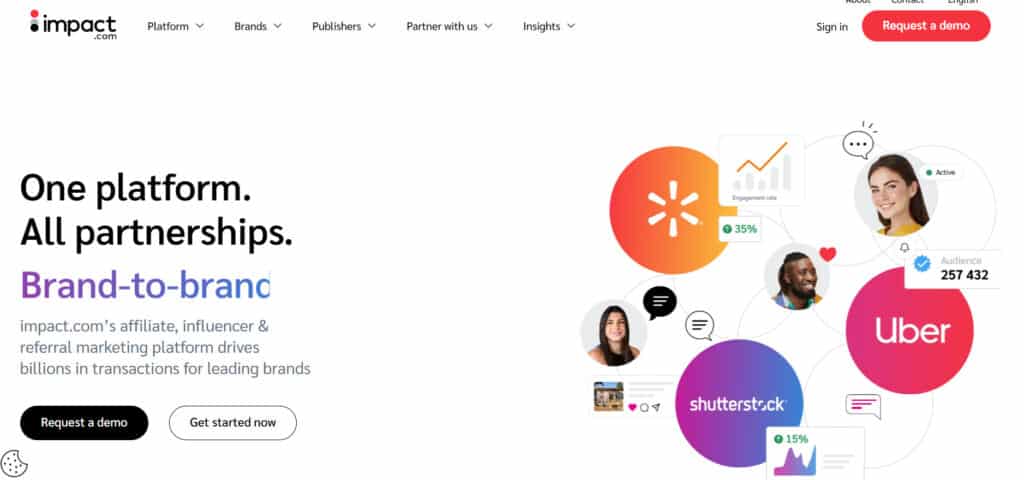
Impact.com connects you directly with big brands like Target, Airbnb, or Adidas. You can apply to work with them, track your earnings, and get paid, all in one place.
Real-Life Example
If you run a personal finance blog, you might partner with banks offering savings accounts or credit cards. With Impact.com, you can find these companies, negotiate terms, and see how much traffic or revenue you’re generating without using ten different dashboards.
Other Features You’ll Love
- Custom campaigns: Create different affiliate links for different channels (blog, email, social) and track each one separately.
- Automated payments: Impact deposits your commissions on schedule.
- Auto-approval options: For certain brands, you can get started immediately without waiting for manual approval.
- Robust analytics: Check out click paths, conversions, and commissions to see what’s working (and what’s not).
- Fraud protection tools: Keep your affiliate business clean with built-in checks to prevent shady activity.
Pretty Links: Make Your Links Short, Sweet, and Trackable
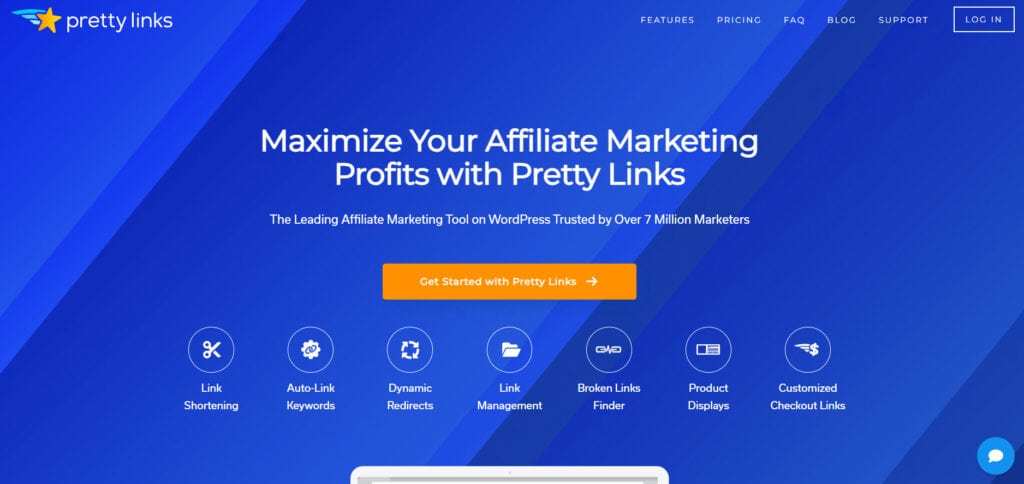
Pretty Links is not a platform: it’s a WordPress plugin that lets you create short, memorable links that still track clicks behind the scenes. This is really helpful for those who are trying to make sure they can share their affiliate offers without coming up as spammy or unreliable. Also, I just love the name.
Real-Life Example:
You’re recording a podcast and want to recommend your favorite standing desk. Saying, “Go to yourwebsite.com/desk” sounds way better than rattling off a messy URL like affiliatecompany.com/product/desk?id=abcdef.
Other Features You’ll Love:
- Auto linking: Set certain words (like “ergonomic chair”) to automatically become affiliate links every time they appear in a post.
- Redirect types: Choose between temporary, permanent, or even JavaScript redirects to suit your tracking or SEO needs.
- Advanced reporting: Track where your clicks are coming from, how often links are used, and what content drives the most traffic.
- Link categorization: Organize your links into folders or tags to keep things tidy and searchable.
- Google Analytics integration: Connect your link tracking to your broader site metrics.
Affilimate: Bring All Your Affiliate Data Into One Place
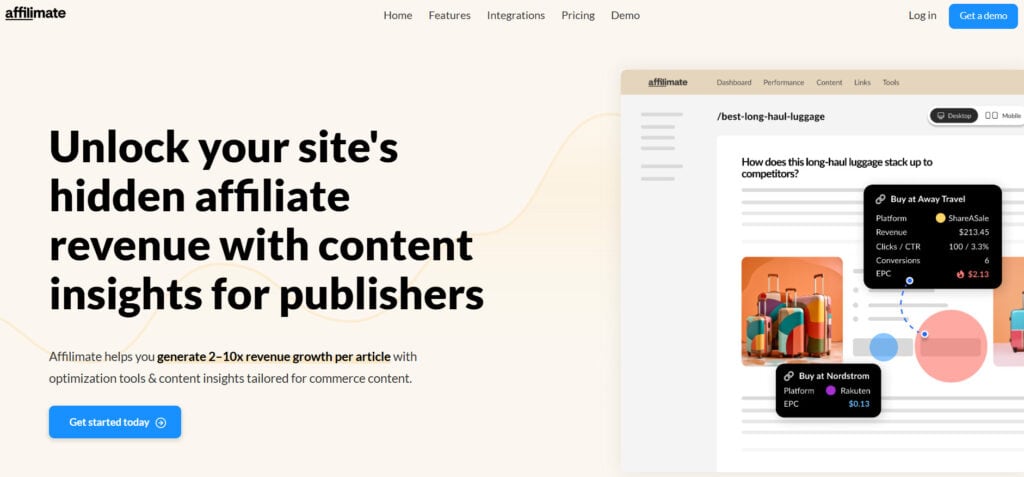
If there’s something any seller needs, it’s clear data. Affilimate pulls data from different networks (like Amazon, ShareASale, Impact, and more) into a single dashboard. You can see exactly which pages, links, and programs make you money — without logging into a dozen different accounts.
Real-Life Example
Let’s say you run a website about camping gear and use five different affiliate programs. Instead of checking each site separately, Affilimate can show you, for example, that your blog post about “Best Tents for Beginners” is driving 40% of your sales across all networks.
Other Features You’ll Love:
- Revenue attribution: Know which blog post or landing page brought in the sale.
- Broken link detection: Alerts you to affiliate links that lead to 404s or removed products.
- Visual reporting: Heat maps, graphs, and revenue timelines make it easy to spot trends.
- Content performance analysis: See which articles drive the most sales so you can focus on what works.
- Multi-network integration: Works with Amazon, Impact, ShareASale, CJ, and more — all in one spot.
Geniuslink: Make Every Click Count, No Matter Where Your Audience Lives
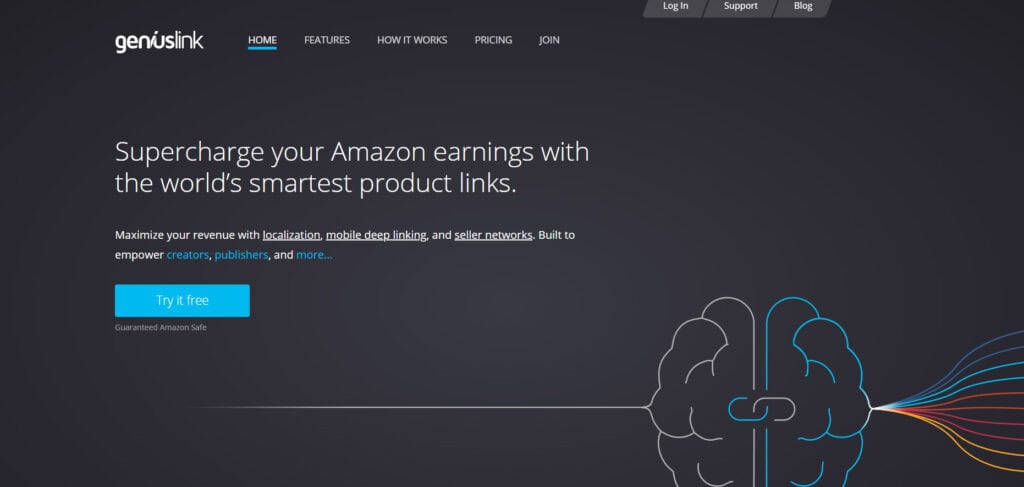
Genius link is one of my favorite tools on this list. If you know anything about sales psychology, you know that adding extra steps for anyone who is trying to buy from you is a big no-no. And guess what happens when someone enthusiastically clicks into your link just to notice they can’t access it? You are probably losing a sale. Or at least making it harder to achieve. Geniuslink automatically sends each visitor to the correct version of a store based on where they live. If you link to a book on Amazon.com, a reader in Germany will be redirected to Amazon.de instead — and you’ll still earn your commission.
Real-Life Example
Say you’re a YouTuber reviewing photography gear. Someone in the UK clicks your link for a camera tripod. Without Geniuslink, they might end up on the U.S. site and either leave without buying or get frustrated. With Geniuslink, they’re instantly sent to the UK store where they can buy, and you get paid.
Other Features You’ll Love
- Out-of-stock alerts: Get notified if a product becomes unavailable, so you can replace it quickly.
- Choice Pages: Give readers multiple buying options (like Amazon, Walmart, and Best Buy) in one simple page.
- Advanced analytics: Track clicks, conversions, and revenue by geography and device.
- Affiliate link syncing: Import your links in bulk and convert them into global links automatically.
- iTunes and Microsoft Store support: Great if you’re promoting digital products across platforms.
Mistakes to Avoid When Choosing an Affiliate Marketing Tool
Choosing an affiliate marketing tool isn’t just about picking the one with the most features or the lowest price. It’s about finding the one that fits your business and your affiliates—now and in the future. Here are five common mistakes people make when choosing a tool, and how you can avoid them.
1. Not Checking If It Works With the Tools You Already Use
It’s easy to get excited about a tool’s features, but if it doesn’t play well with your other systems—like your website, email platform, or e-commerce store—it can quickly become a headache. Without proper integration, you might have to do a lot of manual work just to keep things running. That means more time spent uploading reports or tracking payments by hand, which defeats the purpose of using a tool in the first place.
For example, let’s say you use Shopify or WooCommerce for your store. If your affiliate tool doesn’t sync properly with those platforms, it might not track sales correctly. That leads to missed commissions, confused affiliates, and lost trust. Before you commit, double-check that the tool integrates smoothly with your existing setup, and ask for a demo if you’re unsure.
2. Picking a Tool That Won’t Grow With You
When you’re just getting started, it might seem like you don’t need anything too fancy. But affiliate programs can grow fast. What happens when you go from five affiliates to fifty or five hundred? Some tools are great for small programs, but start to slow down or limit features once you scale.
Think long term. If you have big goals for your business, you’ll want a tool that can grow with you, whether that means adding more affiliates, launching in new markets, or creating different commission levels for top performers. Look for tools that are built to support that kind of growth so you’re not forced to switch later on when things are busy.
3. Not Giving Pricing The Place It Deserves
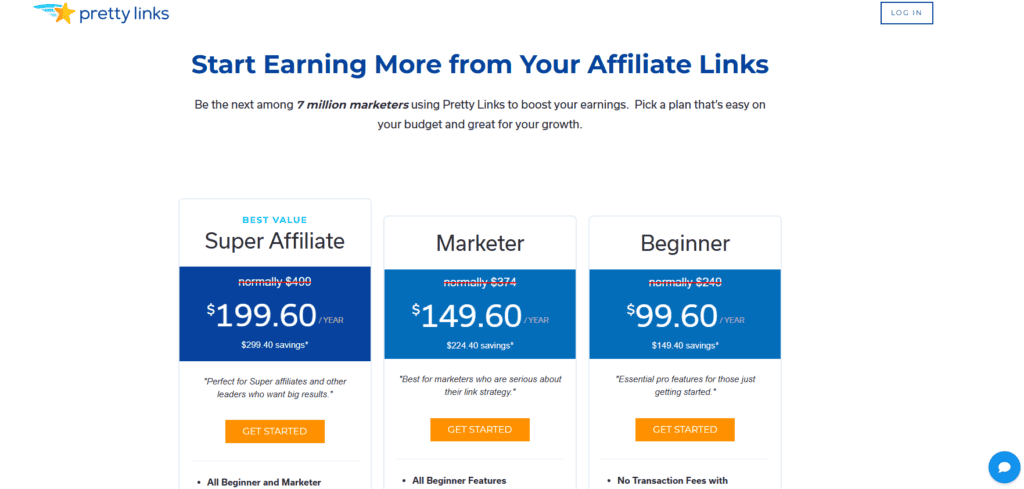
It’s normal to compare prices when shopping for software. But cheaper doesn’t always mean better. A tool might be affordable on paper, but if it’s buggy, hard to use, or missing key features, you could end up spending more time fixing problems than actually running your affiliate program.
Following this same logic, ignoring price completely might leave you dealing with an overpriced tool that could never meet your expectations because it just broke your whole budget. Choose a reasonable price without only focusing on it.
4. Ignoring How Well the Tool Fits Your Workflow
A lot of people pick affiliate tools based on cool features without thinking about how those tools will actually fit into their daily routine. If a tool feels clunky or adds extra steps to your workflow, you’ll end up avoiding it—or worse, making mistakes that cost you commissions. For example, if you usually work inside WordPress and your tool forces you to keep switching back and forth between dashboards just to grab a link, it’ll feel frustrating fast. The best affiliate tools should blend into how you already work, not create more friction.
Before committing to anything, ask yourself: Will this tool make my day-to-day easier or harder? Can it automate tasks you’re tired of doing manually, like fixing broken links or updating outdated offers?
5. Not Paying Attention to the Reporting Features
Tracking clicks and sales is helpful, but you’ll want more than that if you want to grow. Some tools only show you the basics, while others let you dig into which affiliates bring in the most valuable customers, which products convert best, or which campaigns are falling flat.
Good reporting isn’t just about numbers: it’s about insights. It helps you see what’s working and where to focus your efforts. If a tool doesn’t give you that kind of clarity, it’s going to be harder to make smart decisions and keep improving your program. So, before you choose, make sure you know what kind of reports you can get and if those are the type of reports that can help you take action.
Affiliate marketing can be an amazing way to build a steady stream of income, but it’s not just about signing up for programs and posting a few links. The tools you use and how well you use them make a huge difference in how much you actually earn (and how much frustration you avoid). Good affiliate tools help you work smarter, keep track of your links, connect you to the right products, and show you exactly what’s bringing in money. They turn what could be a scattered side hustle into a real, growing business.
Lastly, take your time when choosing your setup and don’t try to incorporate all the tools you find into your systems. You don’t need a massive stack of tools to succeed, you just need the right ones.

